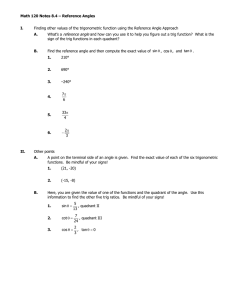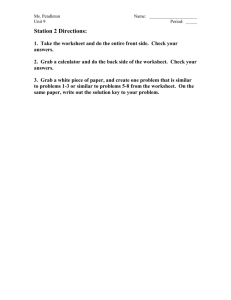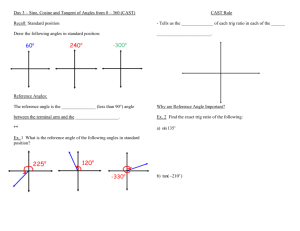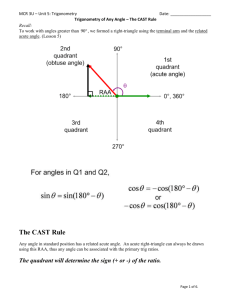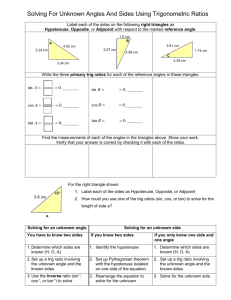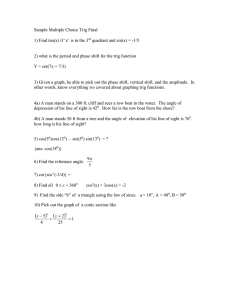Lesson Two: Trigonometric ratios of special angles from 0°... Recall: 1. Positive angles are measured counterclockwise from the x-axis.
advertisement
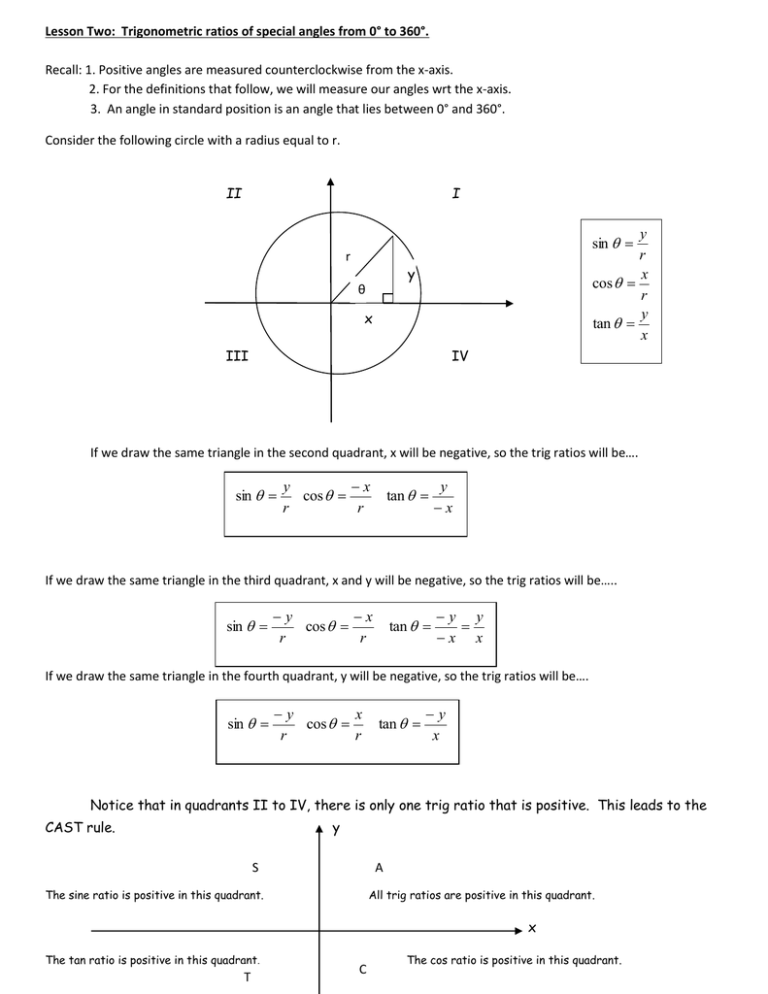
Lesson Two: Trigonometric ratios of special angles from 0° to 360°. Recall: 1. Positive angles are measured counterclockwise from the x-axis. 2. For the definitions that follow, we will measure our angles wrt the x-axis. 3. An angle in standard position is an angle that lies between 0° and 360°. Consider the following circle with a radius equal to r. II I y r x cos r y tan x sin r y θ x III IV If we draw the same triangle in the second quadrant, x will be negative, so the trig ratios will be…. sin y x cos r r tan y x If we draw the same triangle in the third quadrant, x and y will be negative, so the trig ratios will be….. sin y x cos r r tan y y x x If we draw the same triangle in the fourth quadrant, y will be negative, so the trig ratios will be…. sin y x cos r r tan y x Notice that in quadrants II to IV, there is only one trig ratio that is positive. This leads to the CAST rule. y S A The sine ratio is positive in this quadrant. All trig ratios are positive in this quadrant. x The tan ratio is positive in this quadrant. T C The cos ratio is positive in this quadrant. Trig ratios for special angles greater than 90° Method: Find out which quadrant your angle lies and draw a quick sketch. Find the angle that this angle makes with the x-axis. (Often called the reference angle.) Determine the trig ratio for the smaller angle using your special triangle. Determine the sign of the trig ratio, using the CAST rule. Example: Find the following. a) sin 150 This lies in the second quadrant, so the sine ratio is positive. 150° makes an angle of 30° with the x-axis. sin 30 1 2 sin 150 1 2 b) cos225° This lies in the third quadrant, so the cosine ratio is negative. 225° makes an angle of 45° with the x-axis. cos 45 1 2 cos 225 1 2 From textbook: P. 2 #8a) cos 30 AB 300 #9a) sin 60 h 12 3 AB 2 300 cross multiply ... 3 h 2 12 cross multiply ... 300 3 2 AB divide by 2..... 12 3 2h divide by 2..... 150 3 AB 6 3h Hw: P. 2-3 #4-6,8b, 9b,10,11,16,17,19, 20
